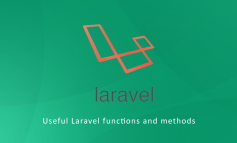Laravel, a renowned PHP framework, is revered for its agility, clarity, and developer-friendly approach. One often overlooked, yet powerful component of Laravel, is its seamless integration with Data and Value Objects. These programming constructs amplify code clarity, enforce data immutability, and promote model purity.
What are Data and Value Objects?
At their essence, Data and Value Objects are simple objects meant to represent specific types of data or domain concepts. Unlike Entities which typically have a distinct identity and lifecycle, Data and Value Objects are defined solely by their attributes.
- Data Objects: Primarily serve as data containers. They do not contain business logic but merely represent structured data.
- Value Objects: Represent descriptive aspects of the domain with no conceptual identity. They are immutable; meaning once a Value Object is created, it cannot be altered.
Why Use Data and Value Objects in Laravel?
- Clarity and Consistency: Data and Value Objects provide a clear contract. When you see a Value Object like
EmailAddress, you immediately recognize its purpose and constraints. - Immutability: Value Objects are immutable, which leads to safer and more predictable code.
- Reusable & Testable: These objects can be reused across multiple parts of an application, and their immutability makes them especially easy to test.
Integrating Data and Value Objects in Laravel
Consider a typical e-commerce scenario where you want to capture a customer’s email address:
Without Data and Value Objects:
$user = new User();
$user->email = '[email protected]';This approach is simple, but it doesn’t validate or encapsulate the concept of an email.
With Value Objects:
class EmailAddress {
private $email;
public function __construct(string $email) {
if (!filter_var($email, FILTER_VALIDATE_EMAIL)) {
throw new InvalidArgumentException("Invalid email address.");
}
$this->email = $email;
}
public function __toString() {
return $this->email;
}
}
$user = new User();
$user->email = new EmailAddress('[email protected]');Here, the EmailAddress Value Object ensures that only valid emails are instantiated. This promotes robustness and domain integrity.
Converting Value Objects to and from Laravel’s Eloquent Models
You might wonder how to store Value Objects in your database using Laravel’s Eloquent. With Eloquent’s attribute casting, it becomes trivial:
class User extends Model {
protected $casts = [
'email' => EmailAddressCast::class,
];
}
class EmailAddressCast implements CastsAttributes {
public function get($model, string $key, $value, array $attributes) {
return new EmailAddress($value);
}
public function set($model, string $key, $value, array $attributes) {
return (string) $value;
}
}With the above casting, Laravel will automatically convert the email attribute to and from the EmailAddress Value Object when accessing or setting the attribute.
Conclusion
Incorporating Data and Value Objects in Laravel is a strategic move to bolster code quality, encapsulation, and robustness. As Laravel continues to evolve, harnessing these constructs will undoubtedly pave the way for more sustainable and scalable applications. Whether you’re building a small web application or an expansive enterprise solution, consider leveraging the power of Data and Value Objects with Laravel.



Leave a Reply